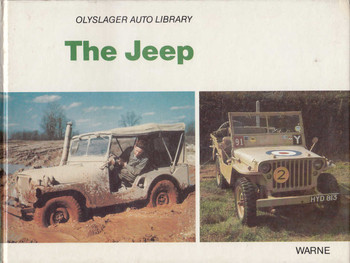Description
Compiled by The Olyslager Organisation, Edited by Bart H. Vanderveen, Hardbound, 64 Pages, First Published, 1970**RARE BOOK IN GOOD CONDITION**
Although half-track vehicles played a prominent part in the second World War when they were employed by most of the belligerent powers, very few were produced after 1945. This was due partly to the availability of large quantities of vehicles left over from the war, which more than satisfied the military needs of the countries who wanted them, and partly to the development of multi-wheeled vehicles with high-floatation tyres and sophisticated fully tracked vehicles which made the half-track principle obsolete.
Before the advent of low-pressure large-section pneumatic tyres, the half-track design was used because it was the only way of carrying heavy loads over soft ground and snow, without going to the expense of operating full-track machines with their inherent problems of intricate steering/braking mechanisms and high operating costs.
Two basic types of half-tracks emerged. One was the type where track bogies replaced a single-wheeled axle (or tandem axles), the other where most of the vehicle's weight rested on long tracks, and two wheels (or one) were added mainly for steering purposes. The former was purely a hybrid machine. Although it performed reasonably well it tended to combine the shortcomings rather than the advantages of both the wheeled and tracked cross-country vehicle. The other type was basically more like a fully tracked vehicle fitted with a pair of wheels to facilitate steering on roads. For slight turns at speed the steering mechanism would not affect the track drive but the tracks would follow the wheels and only for sharp turns the tracks would be made to 'skid' by actuating the brake-controlled differential. The German Zgkw tractors of World War II are good examples of this system.
In this pictorial review of semi-track vehicles we have endeavoured to present typical examples of most of the types produced in various countries, together with some of the many 'odd balls' — such as half-track motor cycles and four-track trucks. Some types are still in use, notably American products of World War II which, in spite of certain shortcomings, still fill a need in several military and civilian applications.






